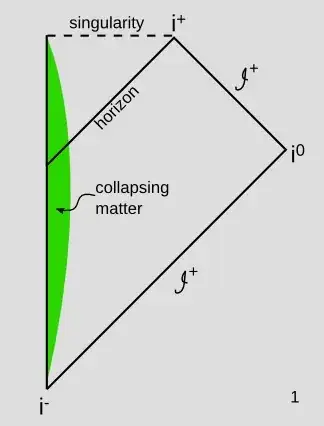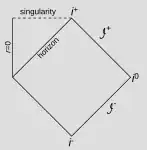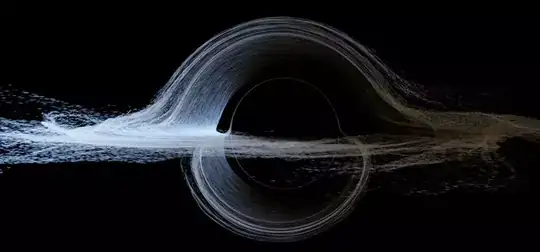It's pretty hard to give a coherent explanation of white holes without appealing to Penrose diagrams. If you haven't seen them before, I have a nonmathematical introduction in section 11.5 of my book Relativity for Poets, as well as further examples in some of the later sections. The basic idea is that they're spacetime diagrams with light cones that make sense, but with the scales distorted, sort of like in perspective art where you have vanishing points. Here is the spacetime diagram for a black hole that forms by astrophysical collapse:

The notation $J^+$ means an idealized vanishing point where photons end up in the indefinite future. In the pictures you've been looking at, the features like the accretion disk are because you have infalling matter, like the green in this picture.
You've already seen a lot of pictures of black holes with accretion disks. Here's one that I made (intended to be pretty realistic) of one without an accretion disk:

This answer has some description of what you're seeing in the image above.
The reason people created theories of white holes goes something like the following. First, they made a description of a spacetime in which there was a black hole with no infalling matter. This is an eternal black hole. It can't really exist in our universe, but it's useful because it's mathematically simple. Historically, it was the first solution found to the Einstein field equations. Its Penrose diagram looks like this:

But mathematically, this can be extended to a larger spacetime that looks like this:

This is called the maximal extension of the Schwarzschild spacetime. It has two singularities, a past one (bottom dashed line) and a future one (top dashed line). It also has two event horizons, enclosing two interior regions, II and IV. In addition to the exterior spacetime I, which is like our universe, it also has a second exterior spacetime III, which is like a parallel universe.
General relativity can't predict what comes out of a past singularity such as the Big Bang or the singularity inside the white hole. As John Earman of the University of Pittsburgh puts it, anything could pop out of such a singularity, including "green slime or your lost socks." So if you like, you can imagine stuff popping out of there if you like, or you can say that nothing does. There is no physical law that tells us what to choose.
The Penrose diagram shows us where matter can end up later if it's in a certain place now, because it has to be in the future light cone. So any socks or whatever that come out of the past singularity could exit either into region I or region III. If it came out into region I, we would see it as stuff being ejected from the event horizon.
instead of a black event horizon, a Hellishly Bright Sphere of light
If the past singularity produces photons, then those would come out, and the white hole could look bright. If the past singularity doesn't produce photons, then it would look black.
If you look at how the light cones work out, it is not possible for the white hole to have an accretion disk of matter falling into it. It does attract matter (its mass is positive), but its event horizon lies in the past light cone of all matter in region I.
Because it has positive gravity, matter can orbit it, and it can deflect light rays, as in the simulated image of the black hole above.
By the way, if you were living in the maximal extension of the Schwarzschild spacetime, you could jump into the black hole, and then during the time you spent in region II, you would be able to see both region I and region III. This type of suicide mission would be the only way to see region III.
 Image from: https://www.newscientist.com/article/dn26966-interstellars-true-black-hole-too-confusing/
Image from: https://www.newscientist.com/article/dn26966-interstellars-true-black-hole-too-confusing/


